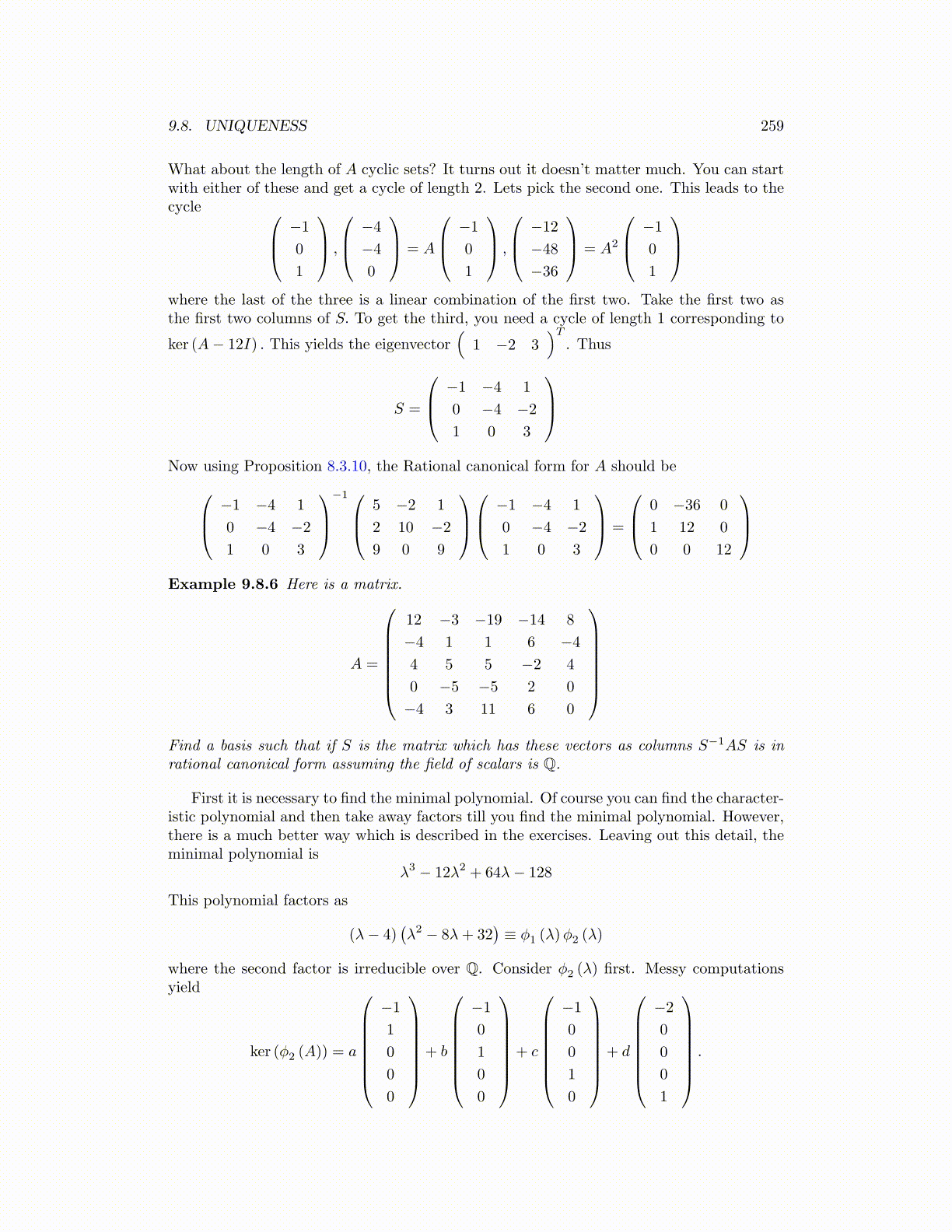
9.8. UNIQUENESS 259
What about the length of A cyclic sets? It turns out it doesn’t matter much. You can startwith either of these and get a cycle of length 2. Lets pick the second one. This leads to thecycle −1
0
1
,
−4
−4
0
= A
−1
0
1
,
−12
−48
−36
= A2
−1
0
1
where the last of the three is a linear combination of the first two. Take the first two asthe first two columns of S. To get the third, you need a cycle of length 1 corresponding to
ker (A− 12I) . This yields the eigenvector(
1 −2 3)T
. Thus
S =
−1 −4 1
0 −4 −2
1 0 3
Now using Proposition 8.3.10, the Rational canonical form for A should be −1 −4 1
0 −4 −2
1 0 3
−1 5 −2 1
2 10 −2
9 0 9
−1 −4 1
0 −4 −2
1 0 3
=
0 −36 0
1 12 0
0 0 12
Example 9.8.6 Here is a matrix.
A =
12 −3 −19 −14 8
−4 1 1 6 −4
4 5 5 −2 4
0 −5 −5 2 0
−4 3 11 6 0
Find a basis such that if S is the matrix which has these vectors as columns S−1AS is inrational canonical form assuming the field of scalars is Q.
First it is necessary to find the minimal polynomial. Of course you can find the character-istic polynomial and then take away factors till you find the minimal polynomial. However,there is a much better way which is described in the exercises. Leaving out this detail, theminimal polynomial is
λ3 − 12λ2 + 64λ− 128
This polynomial factors as
(λ− 4)(λ2 − 8λ+ 32
)≡ ϕ1 (λ)ϕ2 (λ)
where the second factor is irreducible over Q. Consider ϕ2 (λ) first. Messy computationsyield
ker (ϕ2 (A)) = a
−1
1
0
0
0
+ b
−1
0
1
0
0
+ c
−1
0
0
1
0
+ d
−2
0
0
0
1
.